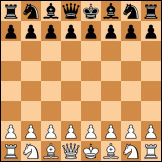Creating a new EGTB may be controversial at the moment, in the time of machine learning/neural networks. On one hand, we know EGTBs don’t bring much strength to chess. 6-men Syzygy EGTB just contributed under 3 Elo for Stockfish 15. With NNUE technology Stockfish can learn automatically a lot of techniques to win endgames. On the other hand, we guess EGTB may contribute much more strength to Xiangqi engines. That guess is based on the fact that Xiangqi endgames are typically much more complicated than chess ones since it has so many tricks and exceptions to win or draw. It is not easy for humans to study so it is for machines to learn, even with some latest techniques. One of my friends – a Xiangqi engine programmer estimated that EGTB brought at least 50 Elo to his strong Xiangqi engine. We need to verify that estimate with some open data and testing.
This project focuses on Xiangqi and Jeiqi. However, we support chess (orthodox chess variant) too. That could help us to compare code, verify, and get ideas and tests from many sources.
This is a long journey. The work is a hobby, mainly for fun and enjoyment as well as for contributing to the community.
All information is published on the GitHub repository and in the BanksiaGUI forum.
We will sometimes update here too.
------------
Brieft after first 7 attempts:
We concluded by using the mailbox technique for board representation for the EGTB project because of some advantages:
- simple: all code is short, clear, easy to understand and maintenance
- easy to support different chess variants, from small to huge boards
- fast (for basic functions such as in/out, move generators, make, takeback, incheck...) enough for chess, be faster than ones with bitboards for bigger boards (such as Xiangqi)

BanksiaGUI is working with both local and online EGTBs


